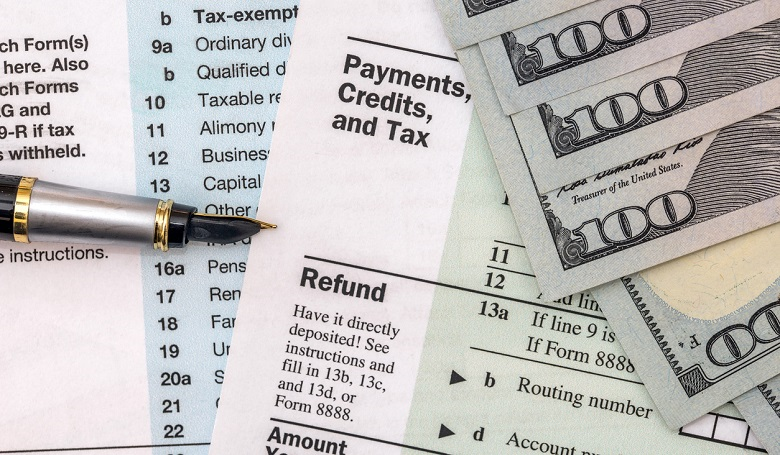As much fun as it is to hold your tax refund check in your hands and rub them together with glee, direct deposit is a simpler and faster method of receiving your refund. It may be safer as well. Not only will you be spared the possibility of someone stealing your check out of the mail, you will also be less tempted to spend it.
However, there is an even better way to avoid spending your refund. You can have it directly deposited into an individual retirement account (IRA) or purchase U.S. savings bonds with it. Some institutions may allow you to directly deposit your refund into other types of accounts such as 529 College Savings Plans or mutual funds.
IRS Form 8888, “Allocation of Refund,” allows you to split your refund into a maximum of three direct deposit accounts. You will need to supply the account number and routing number for each account. Verify the routing numbers with your financial institutions. Do not simply copy the routing numbers from your checks.
Tax refunds may be applied toward traditional, Roth, or SEP-IRA accounts, but not SIMPLE IRAs. The IRA administrator will supply the routing number and the proper account number to use. It may not be your standard account number; some have to be modified to fit the IRS standard format. You will also need to know whether to designate the account as “checking” or “savings.”
Do not forget that this contribution counts against IRA limits, which are $5,500 for tax year 2016 ($6,500 if you are over 50 years old). If you want to apply this contribution to 2016 (covered by this year’s form), the deposit must be received by the typical filing deadline of April 18th, and you must let your custodian know that you wish to apply the contribution to the previous year. Otherwise, it will be considered to be a contribution in 2017.
Part II of Form 8888 allows you to purchase Series I U.S. savings bonds in $50 increments up to $5,000 without registering on TreasuryDirect.gov, where all other bonds must be obtained. These bonds are the only remaining paper bonds that can be bought. All other savings bond sales are handled and stored electronically.
One benefit of this paper bond purchase is the ability to buy bonds beyond the $10,000 limit per year that applies to electronic bond sales. If you have a large enough refund and other available funds, you could purchase up to $15,000 in bonds by this route – $10,000 electronically and $5,000 in paper bonds.
Bonds can be registered as single owner, co-owner, or beneficiary bonds. Beneficiary bonds are popular purchases by parents for their children (or grandparents for grandchildren).
There are a few limitations and concerns with Form 8888. You cannot use Form 8888 if there is also a Form 8379 (Injured Spouse Allocation) involved, or if you are filing an amended return. You can make IRA deposits or buy savings bonds, but you cannot use direct deposit to do so.
Generally, a joint refund cannot be direct-deposited to an individual account. Be sure to check the account status before setting up the direct deposit.
If you made a math error filling out your refund amount, any additional amount will be added to the last account on the list. Any decreases will be taken from the last account, and so on from the next-to-last account until the total is correct.
Consider these sensible and responsible options for your tax refund. You really did not need a new HDTV, anyway.
This article was provided by our partners at moneytips.com.
To Read More From MoneyTips:
Photo ©iStockphoto.com/alfexe


